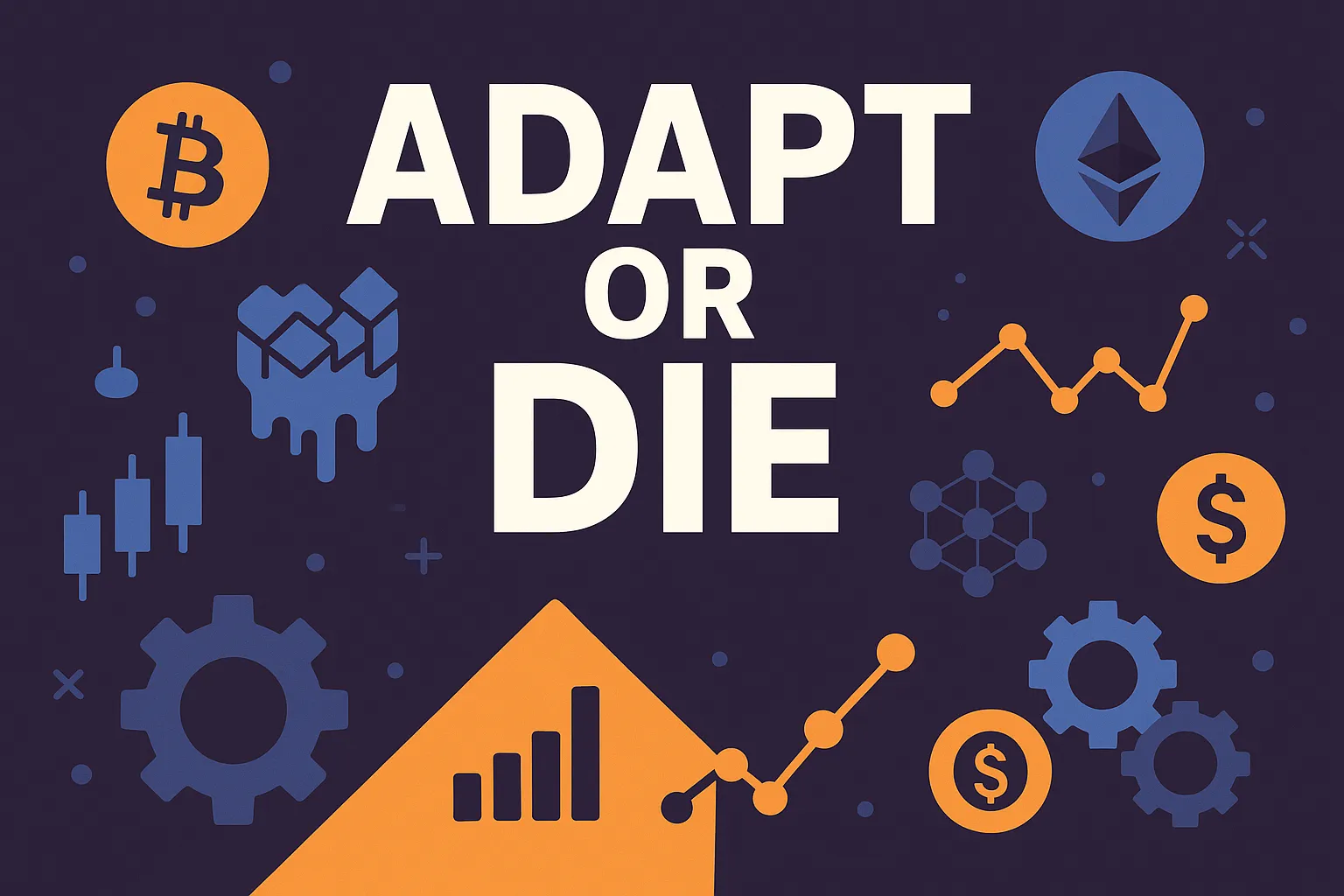Adapt or Die: Crypto Survival Strategies for Builders
Adapt or Die: Why Survival Is the Ultimate Crypto Strategy
In crypto, the harsh reality is simple: innovate or die. Initiatives that do not evolve are overtaken by faster, more streamlined, more flexible rivals. Those who evolve — responding to market slumps, regulatory shifts, technological advancements, and user behavior — do not merely survive but thrive. Whether you’re building a DeFi protocol, crafting NFTs, or building onchain applications, adaptability is not an option — it’s a question of life and death.
Here, we break down how “Adapt or Die” is the de facto crypto rule, how top protocols succeeded by adapting, and how you can incorporate survival into your project.
Table of Contents
- The Meaning of “Adapt or Die” in Crypto
- Why Crypto Markets Punish Inflexibility
- Real-World Crypto Projects That Adapted and Thrived
- Warning Signs: How Projects Fail by Resisting Change
- How to Build an Adaptive Crypto Project
- Conclusion: Adaptation Is a Long-Term Weapon
- FAQ
The Meaning of “Adapt or Die” in Crypto
“Adapt or Die” in blockchain parlance means continuous change on tech, governance, community, and tokenomics.
The rate of evolution in crypto is unprecented — new standards like ERC-404, Layer 2 tech, zk-rollups, DeFi primitives, NFT standards, and decentralized social media platforms every couple of months.
If a project fails to:
- Upgrade its tech stack,
- Maturity its token utility,
- Evolve in response to regulation or liquidity regimes,
- Accommodate shifting community expectations,
it becomes irrelevant or falls apart entirely. Adaptation is not survival — it’s a moat.
Why Crypto Markets Punish Inflexibility
- The crypto market is:
- Hyper-volatile (drawdowns of 50–90% are typical),
- Merciless (villains are punished immediately),
- Community-driven (users run away fast from ecosystems).
Projects that are inflexible lose a lot:
- Loss of TVL (Total Value Locked),
- Token price crash,
- Liquidity drain to more innovative peers,
- Fading community interest.
Example: OpenSea failed to adapt early enough to Blur’s competitive liquidity incentives for NFT traders — losing market lead overnight.
In contrast, dynamic platforms like Blur or Uniswap continued to modify fee models, governance, and UX — staying at the top.
Real-World Crypto Projects That Adapted and Thrived
These are crypto-native examples of “Adapt or Die” done right:
- Uniswap: Matured from simple swaps (V1) to concentrated liquidity (V3) — drastically boosting efficiency and TVL.
- Solana: Despite tech challenges and FTX exposure, Solana invested heavily in performance optimizations and rebranded through community narratives (“Only possible on Solana”).
- LayerZero: Rebranded its messaging from mere bridging to omnichain interoperability, expanding its use cases across various L1s and L2s.
All of these projects:
- Heard users,
- Spent on tech upgrades,
- Altered token incentives,
- Expanded partnerships,
- Altered narratives to conform to market realities.
Warning Signs: How Projects Fail by Resisting Change
Crypto is full of projects that clung too long to dated paradigms:
- EOS: Refused to decentralize the governance and innovate on scalability.
- BitConnect: Batted away Ponzi claims until it imploded.
- Loot NFTs: Reluctant to add layers over their narrative-based economy of NFT.
Patterns of failure:
- Refusing to evolve tokenomics in the wake of liquidity exits,
- Ignoring community governance,
- Failing to bring new upgrades rapidly enough,
- Over-promising, under-delivering with no discernible adaptations.
How to Build an Adaptive Crypto Project
If you want to survive the crypto gauntlet, bake flexibility into project DNA:
- Rapid Iteration Loops: Roll out small upgrades weekly, not annually.
- Onchain Metrics Monitoring: Track changes in user behavior with Dune Analytics, Nansen, or Flipside Crypto.
- Community-Led Governance: Empower token holders to propose and vote on changes.
- Modular Architectures: Write smart contracts modularly so you can iterate without hard resets.
- Dynamic Tokenomics: Dynamically change emissions, fees, and incentives based on real-time flows of liquidity.
In crypto, adaptation speed > product perfection. Ship fast, get feedback, and pivot ruthlessly.
Conclusion: Adaptation Is a Long-Term Weapon
Crypto isn’t about praising perfection — it’s about embracing evolution. Adapt or die is not a motto; it’s an ecosystem law.
Survivors aren’t necessarily the biggest, or the first to move — they’re the quickest-evolving ones when the environment demands it.
In crypto, DeFi, NFTs, and DAOs earth, those that adapt survive to construct another day — and often, to dominate.
Next Step: If you’re building something in crypto today, ask yourself: “Where do I need to adapt now before the market does?”
The solution might be the game-changer for your project.
FAQ
What does “Adapt or Die” mean in crypto?
“Adapt or Die” in crypto means that projects must continuously evolve — in tech, governance, tokenomics, and community — to survive in a hyper-competitive, fast-changing ecosystem.
Why do crypto projects fail when they don’t adapt?
Projects that don’t adapt quickly lose liquidity, community trust, and developer interest, leading to irreversible decline or collapse.
Which crypto projects succeeded by adapting?
Uniswap, Solana, and LayerZero are examples of projects that adapted to new market demands, technical challenges, and user expectations, ensuring their survival and dominance.
How can a crypto project stay adaptable?
By iterating rapidly, monitoring onchain metrics, involving the community in governance, designing modular smart contracts, and evolving tokenomics based on real-world liquidity conditions.




